Whatcom Creek Restoration

A little over ten years ago this stretch of Whatcom Creek through Bellingham burned when gasoline spilled from the Olympic Pipeline in Whatcom Falls Park a couple of miles upstream. It was a major tragedy in which three young people died and beautiful shady woodland habitat along the creek was destroyed. But this section of creek didn’t have much going for it at that time. It was channelized with rock riprap and a weedy field of fill dirt came up to the edge of the blackberry-choked creek.
In 2008 Bellingham initiated a major stream improvement project here and constructed a new trail along the south side of the creek. Designed to reduce flooding on nearby Iowa Street and provide backwater spawning habitat for salmon, 30,000 cubic yards of fill dirt were removed. The slope was graded, native trees and shrubs were planted, and snags were pounded into the ground.
Today, a group of us from the Koma Kulshan chapter of the Washington Native Plant Society toured the area to see the results of the restoration as well as an older planting upstream.
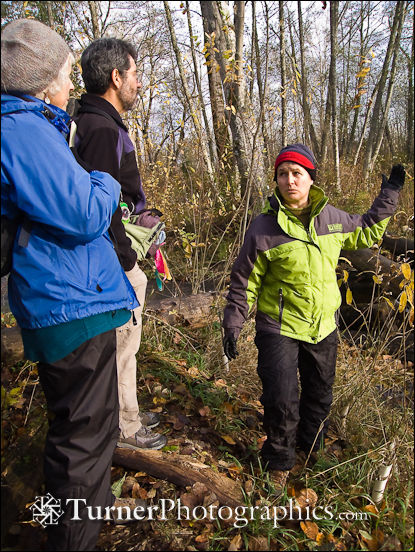 Vikki Jackson was our tour leader. She’s seen here explaining about an older man-made wetland pond constructed several years ago to provide wildlife habitat.
Vikki Jackson was our tour leader. She’s seen here explaining about an older man-made wetland pond constructed several years ago to provide wildlife habitat.
We looked at what species had been planted and discussed the engineering that went into the new wetlands and spawning channels along the creek. The water was running high from our November storms, so we could easily see how engineered log jams were diverting some of the stream flow into the side channels and away from the businesses along Iowa Street on the north bank. Most of the plantings were shrubs like ninebark, red-osier dogwood, hardhack, and snowberry, with some salal and kinnickinick closer to the trail. There were a few maples and a fair number of conifers like Douglas-fir and western red cedar. What we found striking in their absence were red alders and black cottonwoods. Both are early successional trees and alders in particular improve the soil by adding nitrogen.
Overall, we were impressed with the work at Red Tail Reach and look forward to watching what grows, what dies, and how the environment changes in the coming years.

Upstream of the Fraser Street connector trail the restoration has been in place for about nine years. The shrub layer is maturing nicely and the conifers are about 15 feet tall. We mostly agreed that jump starting the mature conifer forest along the creek was a good plan here. There is no nearby seed source, so it would have taken a long time for any Douglas-firs or cedars to get started. Not all the original trees along the creek had burned and we saw a couple of clumps of large cottonwoods.
Among the trees planted were Sitka spruces and some of them had these clumps of brown foliage that Lyle is examining in the photo above. Is this damage from Spruce Needle Miner, Endothenia albolineana, or something else? Whatever caused the damage seemed to only attack new foliage. Here’s a detail:

I’m certainly not an expert in plant diseases nor insect damage. There are aphids that feed on spruces as well as some fungal diseases, but results of my limited Google search suggested that neither of these were the likely culprit because they mostly attack older foliage and this damage appears to be limited to new needles.
After I originally posted this a friend e-mailed that the brown cone-like lump is most likely a Cooley Spruce Gall, produced by Cooley spruce gall adelgids, Adelges cooleyi. The galls are unsightly on spruces, but apparently do little long-term damage to the trees. The aldegids have a complex life cycle which includes Douglas-fir as an alternate host. See Cooley Spruce Galls from Colorado State University Extension for more info.
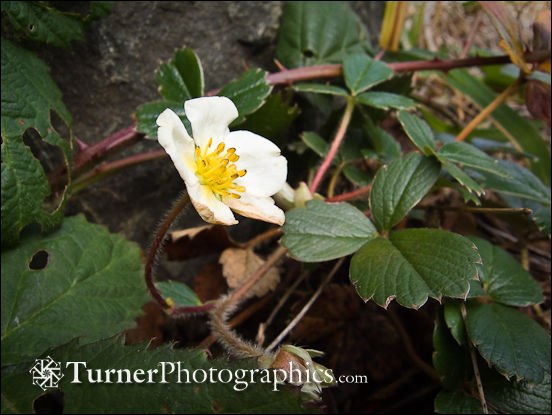
Our outing included spying a few flowers in bloom, mostly non-native weeds. But this little beach strawberry, Fragaria chiloensis was blooming at the base of a south-facing rock protecting a storm sewer outlet channel from erosion. It was struggling to compete with invasive Himalayan blackberries that you can see around the strawberry.
Today’s photos were all made with my pocket camera, a Canon S70.
We’ve had three weeks of heavy rain, high winds, and generally typical November weather. Does the sighting of the first strawberry blooming mean that spring has arrived? You be the judge, but I’m hopeful.


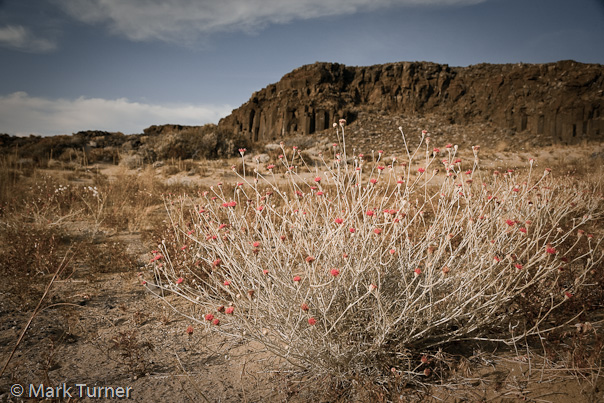


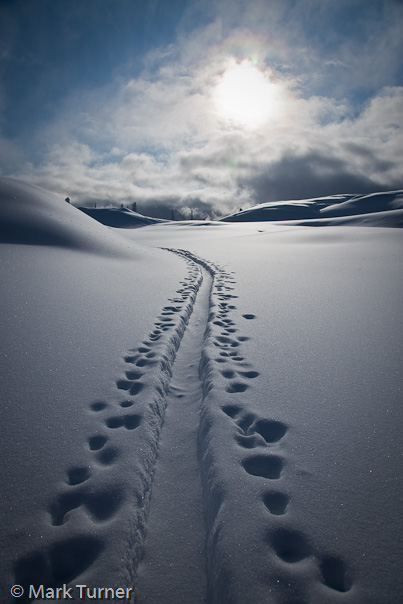 I didn’t get to the ski area parking lot, which was full, until almost 12:30. That was OK since I wanted afternoon light. But it wasn’t OK, because I was racing the clouds that had started to roll in.
I didn’t get to the ski area parking lot, which was full, until almost 12:30. That was OK since I wanted afternoon light. But it wasn’t OK, because I was racing the clouds that had started to roll in. I don’t know just what made these tracks zig zagging across the snow. Could have been a meadow vole or other small rodent that dens under the snow. There were several sets of tracks similar to these in the snow just below Artist Point. I particularly liked this set of tracks because of the way they curved around. What distracted the critter from a straight path?
I don’t know just what made these tracks zig zagging across the snow. Could have been a meadow vole or other small rodent that dens under the snow. There were several sets of tracks similar to these in the snow just below Artist Point. I particularly liked this set of tracks because of the way they curved around. What distracted the critter from a straight path?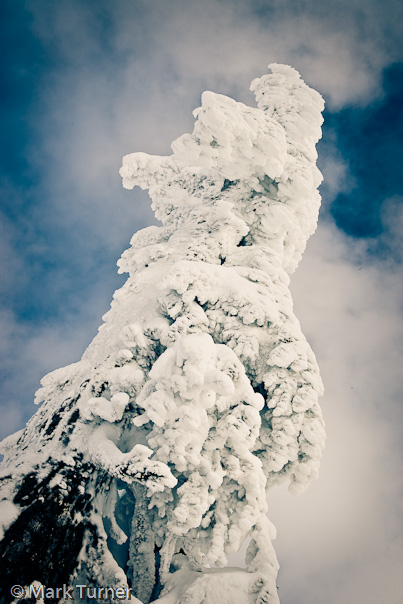 I broke trail the short distance to the overlook toward Swift Creek and Baker Lake. Clouds obscured the lake as well as Mt. Baker, but the snow crusted on the Mountain Hemlocks along the ridge created more accessible drama. I ate my peanut butter sandwich under this tree, admiring the way the wind had blasted the snow into the branches, almost completely hiding the foliage.
I broke trail the short distance to the overlook toward Swift Creek and Baker Lake. Clouds obscured the lake as well as Mt. Baker, but the snow crusted on the Mountain Hemlocks along the ridge created more accessible drama. I ate my peanut butter sandwich under this tree, admiring the way the wind had blasted the snow into the branches, almost completely hiding the foliage.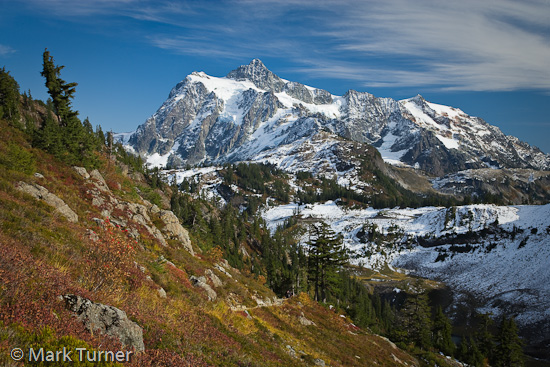
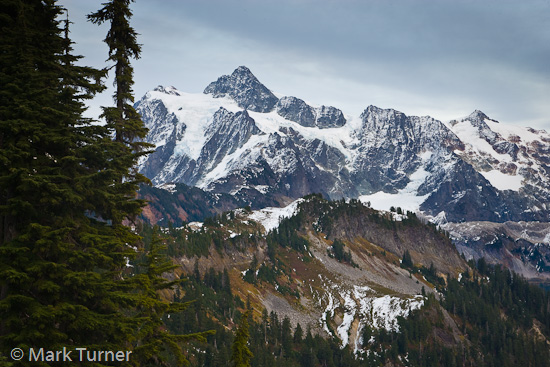
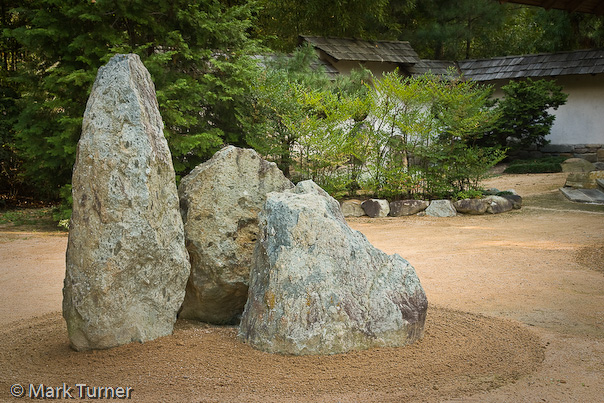

 This woodland gazebo is in the front yard of Jean Mitchell’s home in Carey. They’ve been in their home since the early 1960s and have gardened since their kids grew up. Now nearly 80, Jean still has a playful attitude toward gardening. There’s a trail (one of many) with a sign that says “Diamondback Trail.” Along it Jean has painted some large tree roots to look like colorful snakes.
This woodland gazebo is in the front yard of Jean Mitchell’s home in Carey. They’ve been in their home since the early 1960s and have gardened since their kids grew up. Now nearly 80, Jean still has a playful attitude toward gardening. There’s a trail (one of many) with a sign that says “Diamondback Trail.” Along it Jean has painted some large tree roots to look like colorful snakes.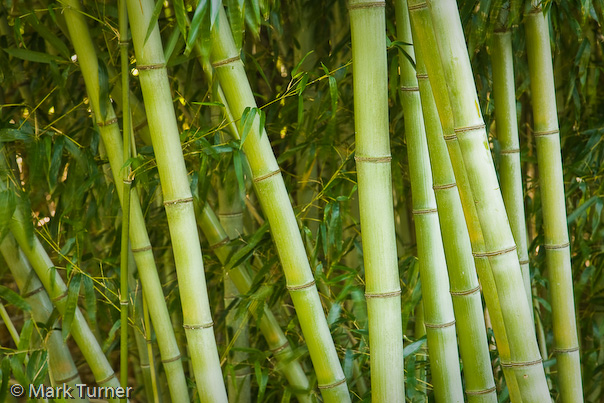
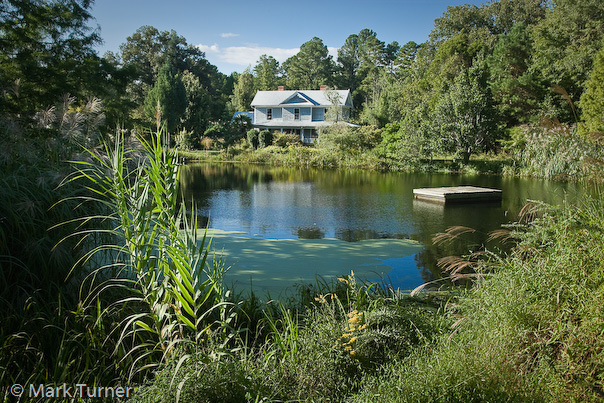
 Those of us who live in the Pacific Northwest would never think to put the chaise lounge in a shady woodland border. But when you live in hot and humid North Carolina it makes perfect sense to create a hideaway in the shade where you can catch the breezes and relax away from the sun.
Those of us who live in the Pacific Northwest would never think to put the chaise lounge in a shady woodland border. But when you live in hot and humid North Carolina it makes perfect sense to create a hideaway in the shade where you can catch the breezes and relax away from the sun.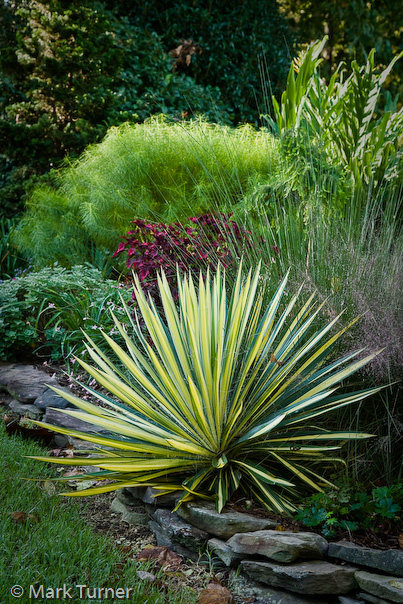 A little of this and a little of that could describe Jeanne Andrus’ generous garden in a gated community in Raleigh. She grew up on the property and said she used to fly kites as a kid in the meadow where her home now stands. It’s changed a lot since then, including an ever-expanding garden that surrounds the house. Jeanne started gardening when her kids grew up and hasn’t stopped since.
A little of this and a little of that could describe Jeanne Andrus’ generous garden in a gated community in Raleigh. She grew up on the property and said she used to fly kites as a kid in the meadow where her home now stands. It’s changed a lot since then, including an ever-expanding garden that surrounds the house. Jeanne started gardening when her kids grew up and hasn’t stopped since.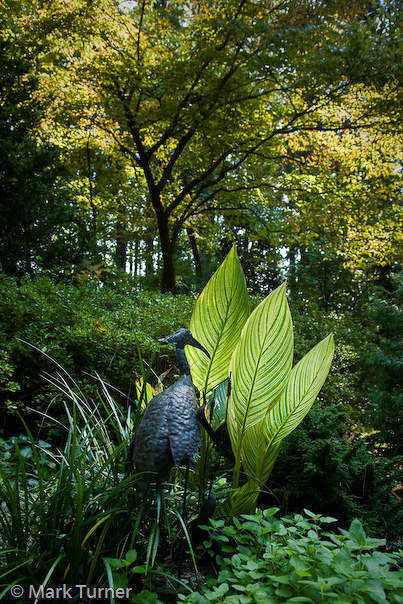 I’m learning that gardeners and homeowners in North Carolina’s Piedmont region value their shade. I spent today photographing and enjoying three woodland gardens in and around Raleigh.
I’m learning that gardeners and homeowners in North Carolina’s Piedmont region value their shade. I spent today photographing and enjoying three woodland gardens in and around Raleigh.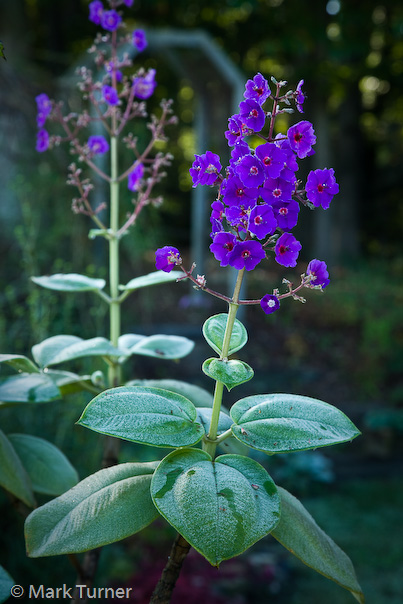 I started my day in Rita Mercer’s garden. It’s also a woodland garden, neatly maintained under the mixed hardwood and loblolly pine canopy. As I worked I constantly heard acorns falling from the oaks. I never got hit, but was glad I was wearing a cap. In September, Rita’s garden is primarily a foliage garden, but I could imagine it coming to life each spring starting with masses of hellebores and continuing with rhododendrons and azaleas.
I started my day in Rita Mercer’s garden. It’s also a woodland garden, neatly maintained under the mixed hardwood and loblolly pine canopy. As I worked I constantly heard acorns falling from the oaks. I never got hit, but was glad I was wearing a cap. In September, Rita’s garden is primarily a foliage garden, but I could imagine it coming to life each spring starting with masses of hellebores and continuing with rhododendrons and azaleas.
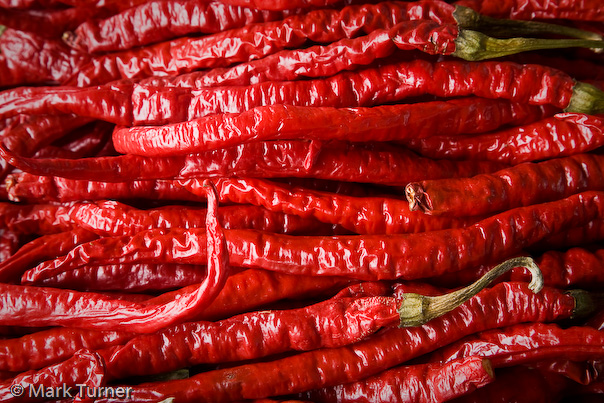
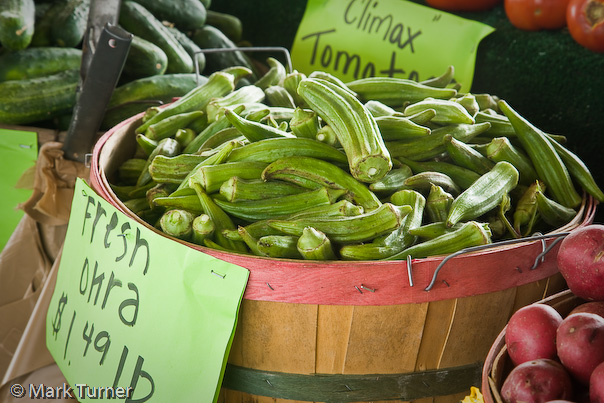
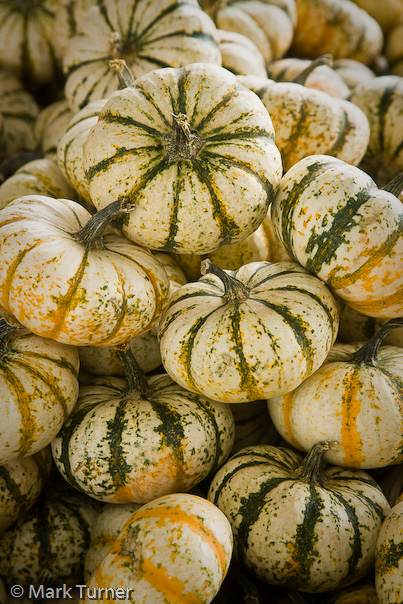 Now that autumn has arrived pumpkins and gourds are ripe. Families are starting to put up fall decorations in anticipation of Halloween. These miniature pumpkins were part of a colorful farm display at the market. Several vendors had pumpkins, both little ones like these and big ones suitable for jack-o-lanterns. In between are the sweet pie pumpkins.
Now that autumn has arrived pumpkins and gourds are ripe. Families are starting to put up fall decorations in anticipation of Halloween. These miniature pumpkins were part of a colorful farm display at the market. Several vendors had pumpkins, both little ones like these and big ones suitable for jack-o-lanterns. In between are the sweet pie pumpkins.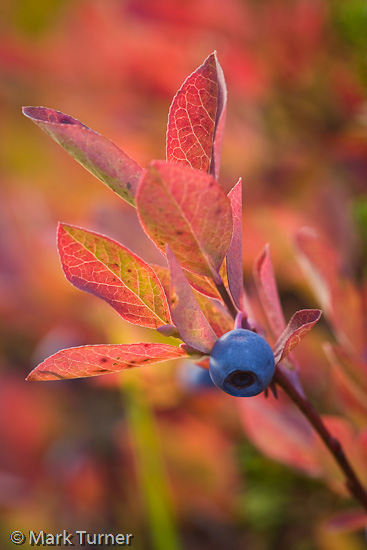 I had a family portrait session reschedule from Sunday afternoon, so I took a look at the clouds to the east and decided to head up to Heather Meadows and Artist Point for some landscapes. I didn’t get out of town until after 2 pm, which was fine since I really wanted sunset at 7:10.
I had a family portrait session reschedule from Sunday afternoon, so I took a look at the clouds to the east and decided to head up to Heather Meadows and Artist Point for some landscapes. I didn’t get out of town until after 2 pm, which was fine since I really wanted sunset at 7:10.
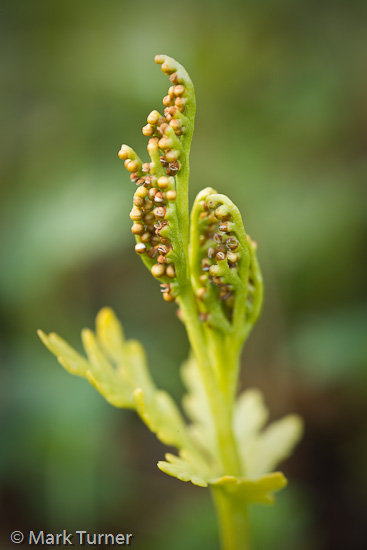 The Grapeferns (right) get their name because their spore-bearing structures resemble bunches of grapes. This little specimen is Lanceleaf Grapefern, Botrychium lanceolatum. It’s only about 3 inches tall and very easy to miss. I spied four plants just off the Bagley Lakes Trail. I probably would have missed them if it weren’t for another larger species of Botrychium that caught my eye within a foot of the trail.
The Grapeferns (right) get their name because their spore-bearing structures resemble bunches of grapes. This little specimen is Lanceleaf Grapefern, Botrychium lanceolatum. It’s only about 3 inches tall and very easy to miss. I spied four plants just off the Bagley Lakes Trail. I probably would have missed them if it weren’t for another larger species of Botrychium that caught my eye within a foot of the trail.